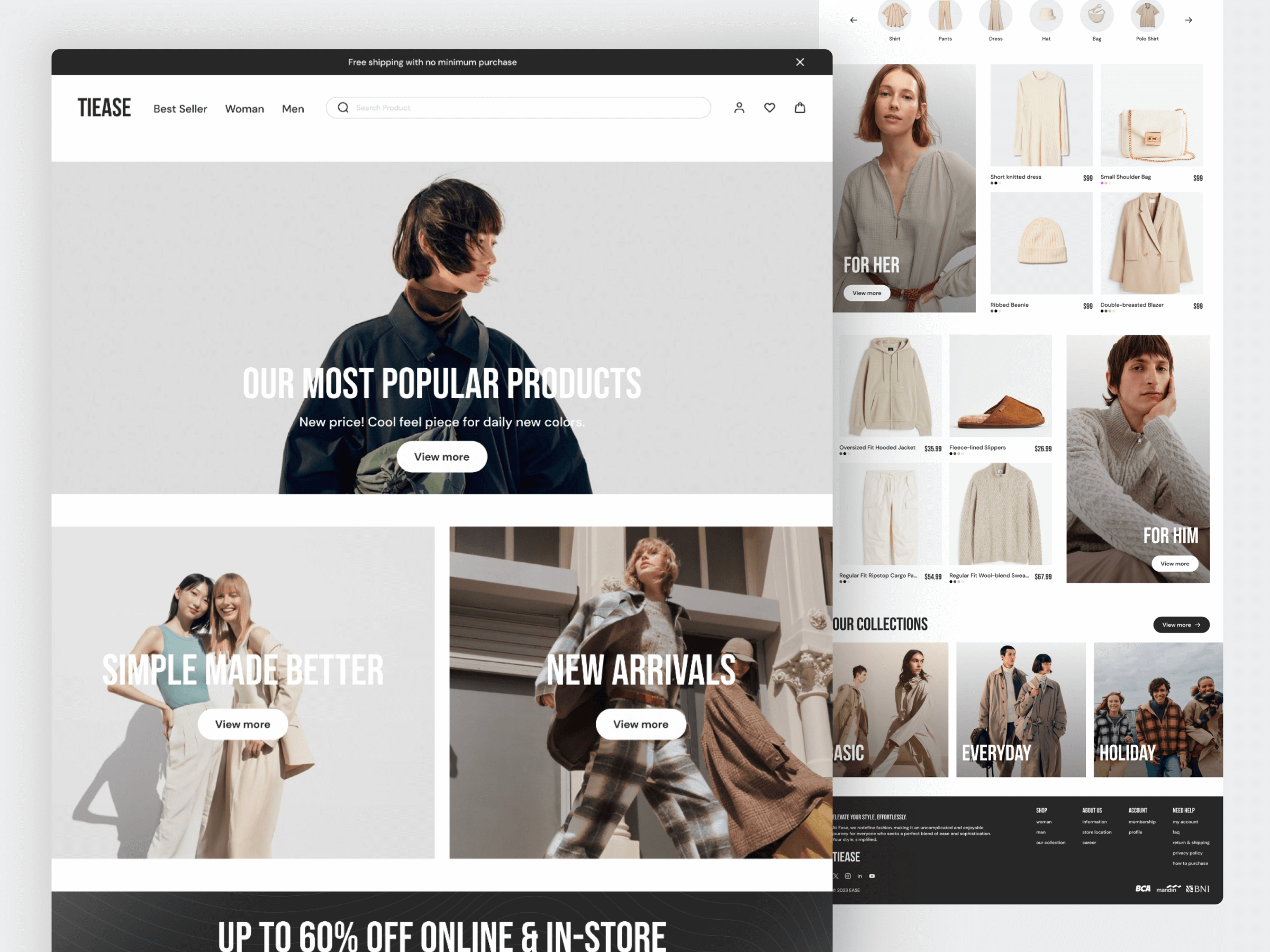Index Surge: Amplifying Your Insights
Stay updated with the latest trends and news across various industries.
Click, Scroll, Buy: The Secret Sauce of Good E-Commerce Design
Unlock the secrets of e-commerce success! Discover the design tricks that transform clicks into sales in our latest blog post.
How to Create a Seamless Customer Journey in E-Commerce Design
Creating a seamless customer journey in e-commerce design is essential for maximizing conversions and customer satisfaction. To begin, focus on ensuring that your website is user-friendly and intuitive. Implement a clear navigation structure that allows customers to find what they are looking for effortlessly. Consider using breadcrumbs to help users understand their current location on your site, and include a search bar to facilitate quick access to specific products. Additionally, ensure that your website is fully responsive, providing a consistent experience across all devices, which is crucial as more shoppers are using mobile devices to browse and purchase online.
Another key aspect of achieving a seamless customer journey is optimizing the checkout process. Minimize the number of steps required to complete a purchase by implementing features like guest checkout and auto-fill options for returning customers. Also, clearly display shipping costs and delivery options to avoid any unpleasant surprises at the checkout. By creating a streamlined and transparent process, you not only enhance the customer experience but also reduce cart abandonment rates, ultimately leading to increased sales and customer loyalty.

The Psychology Behind Effective E-Commerce Layouts
The design and layout of an e-commerce website play a crucial role in influencing consumer behavior. By understanding the fundamentals of psychological principles, businesses can create environments that encourage browsing and increase conversion rates. For instance, color psychology significantly impacts purchasing decisions; certain colors can evoke feelings of trust or urgency, steering customers towards desired actions. Additionally, strategically placed call-to-action buttons in visually prominent areas capitalize on the F-pattern reading style, where users tend to scan from left to right, making it essential to highlight important offers and promotions.
Another key aspect of an effective e-commerce layout is navigation. A simple, intuitive navigation menu can reduce cognitive load, allowing shoppers to find products with ease and enhancing their overall shopping experience. Incorporating social proof, such as customer reviews and testimonials, into product pages can further bolster confidence in purchasing decisions. Moreover, when products are grouped thoughtfully—using categories that resonate with consumer interests—shoppers are more likely to engage. By tapping into these psychological insights, e-commerce sites can drive sales while fostering customer loyalty.
Top 5 Design Mistakes That Kill E-Commerce Sales
In the highly competitive world of e-commerce, even the smallest design missteps can severely impact sales and customer engagement. One of the most critical mistakes is an overly complicated navigation system. If users struggle to find what they are looking for, they are likely to abandon their carts. A simple, intuitive layout that guides customers effortlessly to products is essential for success. Make sure your categories are clearly defined and easy to access, and consider implementing a user-friendly search function to further enhance the shopping experience.
Two of the most damaging design blunders is not optimizing for mobile devices. With an increasing number of consumers shopping on their smartphones, a site that isn’t mobile-friendly can lead to frustration and lost sales. Ensure that your website is responsive, meaning it adapts smoothly to various screen sizes. Additionally, consider the use of large, high-quality images and clear calls to action. Three occurs when loading times are ignored; slow sites can deter potential buyers and negatively impact search engine rankings. Aim for fast loading times to keep users engaged and boost your conversion rates.